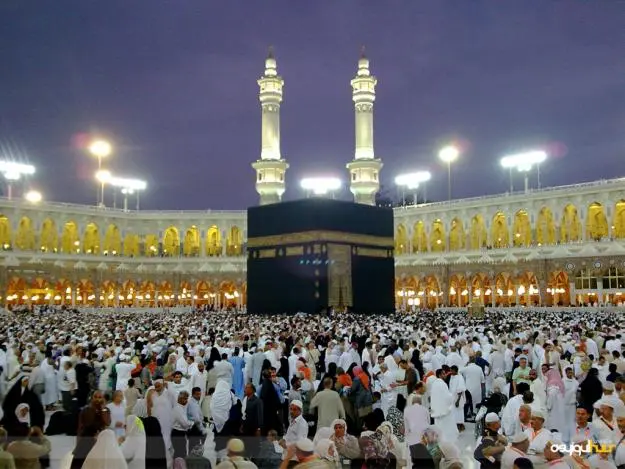For the pilgrims travelling with Umrah packages including flightscompleting the holy rituals is a challenging task because they are not familiar with the different aspects of the holy pilgrimage. Especially for first-time Umrah travellers, the pilgrimage rituals can be confusing as it is an Ibdah that we don’t observe on a daily basis. In fact, getting the opportunity to perform Umrah is often once in a lifetime opportunity for pilgrims.
Here’s a step-by-step Umrah guide.
Umrah consists of four primary rituals. Fulfilling these rituals is necessary to make your Umrah pilgrimage valid. Such as;
- Entering the State of Ihram.
- Tawaf of Holy Kaabah.
- Sai of Safah and Marwah Hills.
- Shaving/trimming the head.
Entering the state of Ihram.
When you arrive in Makkah for the holy rituals of Umrah, you must enter the state of Ihram before entering Makkah’s boundary. There are a total of 5 Miqat stations present at all corners of Makkah to facilitate pilgrims travelling from across the globe. You must determine the Miqat station for your region of travel and assume your Ihram from here.
To enter Ihram, pilgrims need to do certain acts. Such as;
- Clip their fingernails and toenails.
- Shave/trim unnecessary hair from the body.
- Get a beard trim and haircut (optional).
- Perform Ghusl (sunnah act). Ghusl is Wajib for a pilgrim entering Ihram if he/she is in a state of major physical impurity. Otherwise, you can also make Wudhu (ablution).
- Wear neat and clean Ihram clothes.
Ihram clothing is different for men and women.
- Male pilgrims can only utilize two sheets of cloth (white coloured and unstitched) for the Ihram. One of them covers the lower half of the body while the other one is for covering the upper half of the body. No other piece of clothing, stitched or unstitched, is permissible to wear for men in Ihram.
- Female pilgrims can wear anything they desire for the Ihram under the condition that it is modest, simple, loose fit and not revealing. Additionally, it is a restriction for women to wear only stitched clothes for Ihram. That’s why you will see many female pilgrims wearing an Abaya over their ordinary clothes to fulfil all of the requisites of Ihram and avoid any confusion.
After wearing Ihram clothes, pilgrims should offer Rakat Salat-al-Ihram and make Niyyah for Umrah. Note that when a pilgrim assumes Ihram, there are certain prohibitions for him/her that persist until the state of Ihram is denounced upon the completion of holy rituals. These prohibitions prominently include;
- Cutting nails.
- Trimming hair.
- Wearing scents/fragrances.
- Sexual intimacy with spouse.
- Harming plants.
- Killing or hunting any animal/insect (except for self-defence).
- Covering head and feet (for men).
- Covering face and hands (for women).
Tawaf of Holy Kaabah.
After assuming Ihram, pilgrims can enter Masjid-al-Haram to begin the holy rituals of Umrah. Tawaf is an act of walking around Holy Kaabah for seven rounds in an anti-clockwise direction. Every round of tawaf must begin at the place of Hajar-al-Aswad, ending at the same spot as well.
When the seven rounds of Tawaf are complete, pilgrims go towards Maqam-e-Ibrahim and offer two Rakat Salat-al-Tawaf there. Then, drink Zamzam water.
During Tawaf, remember to stay within the premises of Masjid-al-Haram and don’t pass through Hatem (Hijr Ismail). Otherwise, your tawaf will be invalid.
Sai of Safah and Marwah hills.
During the third ritual of Umrah, Sai, pilgrims walk between the hills of Safa and Marwah seven times. Both of these hills are contained within Masjid-al-Haram. Each round of Sayee is nearly 450 meters long and the total distance that pilgrims need to cover for seven rounds is 3.15 kilometres. If any part of this distance is not properly covered, your Sai will become invalid.
Start your first round from Safah towards Marwah and the second round from Marwah to Safah. Then proceed in the same manner so that the seventh round ends at Marwah Hill.
Shaving/Trimming hair.
The last ritual of Umrah, after the completion of Sai, is Tahallul. For this, men must shave their heads completely (Halq) because it is a sunnah act. Women, on the other hand, can only trim a fingertip’s length of their hair (Taqsir).
After Tahallul, you can come out of the state of Ihram because your Umrah is complete and all of the restrictions of Ihram are also lifted.
So, that’s how you can perform Umrah step by step with Halal-friendly Holidays.




